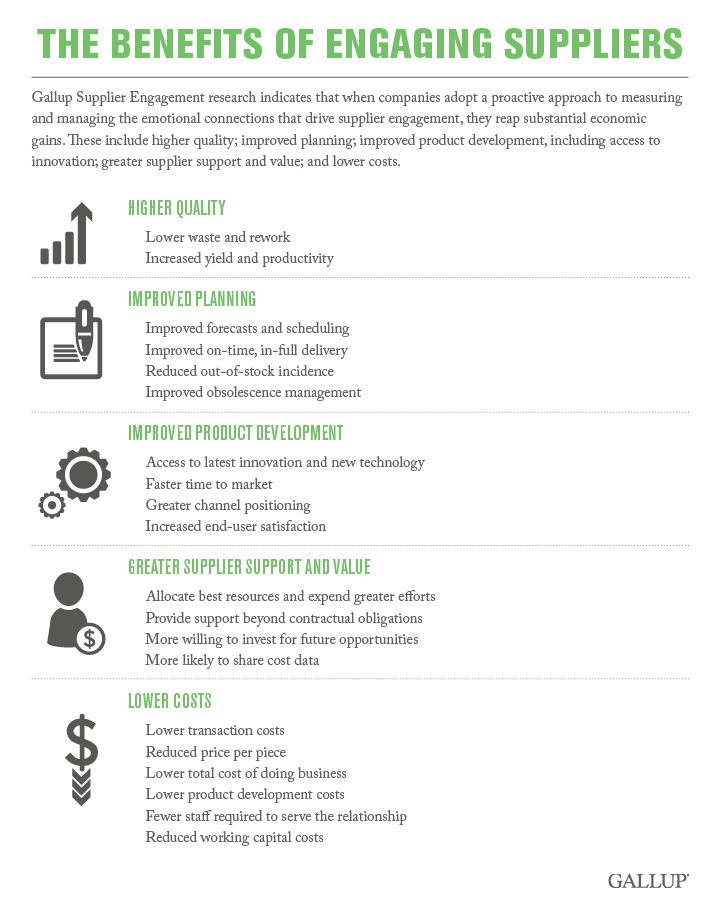Customers of choice gain unique benefits, such as access to the supplier's best people.
A volcanic ash cloud closes European airspace and disrupts the availability of a component you need to complete final assembly of your most profitable, highest volume handheld device. An insect infestation in Brazil devastates a key ingredient required to manufacture your most important confectionery product. A strike in France leads to a gasoline shortage that threatens to idle your manufacturing lines.
These are just a few examples of the myriad challenges facing today's global supply chain management organizations. And disturbances like these can exact a heavy toll on shareholder value. As much as 10% of a company's value could disappear as a result of glitches in the supply chain.
Because so much can go wrong -- and because glitches are so expensive -- many companies take a risk-focused approach to managing their supply chains. But that's a one-sided view. "You might have a perception of risk in your business, but it's difficult to guarantee your supplier has the same perspective," says Richard Wilding, professor of supply chain strategy at Cranfield University School of Management. It's virtually impossible to coordinate perceptions of risk without focused and ongoing conversations between your company and your suppliers.
Viewing supplier relationships through the lens of risk will show where the potential losses are greatest. But there is also much to learn from Gallup's experience with the dynamics of -- and from organizations' efforts to become customers of choice with their suppliers.
Supplier relationship management (SRM) offers a seemingly comprehensive way to assess and streamline the processes between an enterprise and its suppliers to make them more effective. In an SRM approach, the only key performance indicator that truly matters is year-over-year cost reductions.
But times and expectations have changed. Assessing and evaluating suppliers reveals many different factors that can affect the supply chain. Yet most SRM programs have overlooked the most obvious factor of all: the reality that suppliers are people.
This is meaningful, because people work harder and better for companies when they are emotionally engaged with them. To capitalize on this discretionary effort, companies must create a different set of conversations that aim to emotionally engage their suppliers and to become a "customer of choice."
Customers of choice gain unique benefits, such as access to the supplier's best people, access to the resources required to serve account relationships, first access to the supplier's latest technological advances, more favorable terms, shared risk taking, and priority allocation of resources or production capacity in times of scarcity. Being a supplier's customer of choice creates a vital strategic advantage.
Using a supplier engagement approach
To become a customer of choice, companies must develop a supplier engagement strategy that builds on an accurate assessment of the strengths of their supplier relationships. Using a simple consistent instrument to assess these relationships across markets, languages, and product or service categories gives companies a highly effective way to measure and manage supplier perceptions -- and to determine whether they are a customer of choice with their suppliers.
优蜜传媒Supplier Engagement research indicates that companies that adopt a proactive approach to measuring and managing the emotional connections that drive supplier engagement can reap substantial economic gains, including higher quality, improved planning, improved product development, greater supplier support and value, and lower costs.

Becoming a customer of choice
How does a company achieve elite status with its suppliers? 优蜜传媒suggests that there are three key factors to becoming a customer of choice:
- Engage your suppliers. Seek feedback and listen.
- Let your suppliers into the tent. Willingly share information.
- Be easy to do business with. Strive for clarity, simplicity, and consistency.
Moving beyond the transactional dimensions of supply chain management into a deeper understanding of supplier relationships is critical. Effective supply chain management requires more than improving supplier performance and reducing costs. It requires a major evolution in how companies approach SRM -- and how they organize their operations from suppliers through to customers.
Supplier relationship management is recognized as a key factor in managing corporate risk, and companies must manage it positively and proactively, with an eye toward becoming a supplier's customer of choice. Unfortunately, there are very few practical tools or metrics available that reliably capture a supplier's willingness to go above and beyond for its customers of choice -- or that allow customers and suppliers to assess the quality of their partnership. In our next article on supplier engagement, we'll discuss how companies can assess the supplier-customer dynamic and develop a mutually beneficial relationship that creates value for both parties.